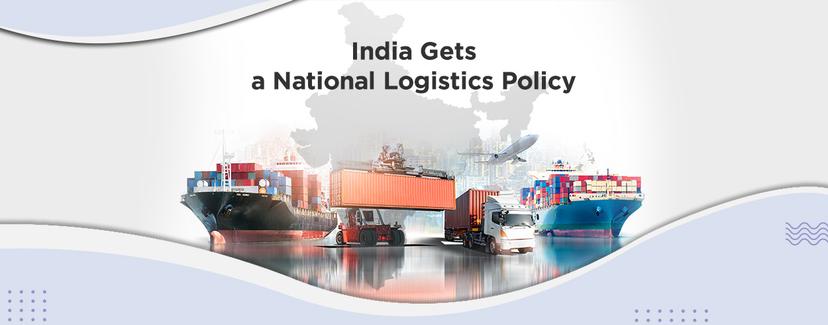
India Gets A National Logistics Policy
Prime Minister, Shri Narendra Modi launched the National Logistics Policy (NLP) at Vigyan Bhawan, New Delhi on 17th September 2022. NLP is a...
Read key details about various schemes like NIRVIK, reimbursements that state levies, increase in Fishery exports, hike in customs duties, export hubs, FTA, and more.

*Hike in customs duties would prevent the Chinese dumping of goods in India which we have been witnessing for a long time, especially post the USA sanctions on China. The Chinese companies have excess capacities for production and as a result, they are dumping goods in India at very cheap prices. The hike in customs and tariffs would prevent dumping of Chinese goods and will protect the local producers.* The budget 2020 of India, is considered to be one of the most important in the last few years in the backdrop of slowing growth.
The government has to now make sure that the budget has policies which ensure inclusive development as well as the growth of the entire economy. The economy is currently facing a demand slowdown and hence the government needs to make sure that consumer sentiment sees a pick up in the coming quarters. First, it could bring into place policies that would promote exports like an export subsidy. This would increase the domestic production which would further propel the growth of incomes in the economy. Secondly, it could reduce imports by taxing them.
Additionally, the global growth seems to be reviving which could thus propel our net exports if the right policies are in place. Hence, at this point in time, the import-export sector is one of the most important sectors in terms of the revival of growth. **The Budget for the Import-Export Sector:** There have been various policy measures taken by the government in order to give a boost to this sector. They are as follows:
## 1. Niryat Rin Vikas Yojana (NIRVIK) will be provided for the upliftment of small exporters The government, in the budget, proposed the NIRVIK, scheme, also called Export Credit Insurance Scheme (ECIS). Under this scheme, the insurance cover that will be provided to small exporters would be enhanced while on the other hand, the premium for the insurance would be reduced. This, according to the industry experts, is an appropriate and timely step taken by the government.
The government is also working towards a simplified procedure for claim settlement. This step was taken to achieve higher export credit disbursement. Earlier, under ECIS, the Export Credit Guarantee Corporation (ECGC) provides a credit guarantee of up to 60% of the principal and interest amount. However, now under NIRVIK, the insurance cover guaranteed would cover up to 90% of the principal and interest. This includes both pre and post-shipment credit. This is a crucial and a necessary step taken by the government especially due to the timing. This is because at the current time of demand slowdown and uncertainty existing in the markets, there exists a tendency for a rise in payment defaults.

Additionally, NIRVIK is expected to increase the affordability and accessibility of credit insurance to smaller exporters while also reducing the liquidity requirements. This is one way to promote the exporters to export more, thereby boosting net exports and consequently domestic production.
## 2. Scheme for exporters will be launched to reimburse state levies to empower falling exports The Finance Minister (FM) in her budget speech mentioned that a scheme will be launched this year by the government for the exporters wherein the taxes and duties paid by them would be reimbursed. The primary aim of this scheme is to boost falling exports. It has been proposed by the government that the remission of the various taxes and duties levied at the state and the centre would take place digitally. The taxes that are covered under this scheme include value-added tax (VAT), electricity duties and the fuel used for transportation. These have been brought under this scheme as these are not getting refunded or exempted under any other existing mechanism. This is a very important move as a similar scheme earlier proposed i.e. the Merchandise Export from India Scheme (MEIS) was not in compliance with the global trade rules. However, this is in perfect compliance with WTO rules as according to these rules certain state taxes on power, oil, education cess and water are allowed to be refunded. This move would also encourage the exporters to export more as remission of such taxes essentially implies a reduction in the cost of operations. As a result, the margins of the businesses would go up leading to greater profitability for businesses. Improved profitability would, therefore, enable the companies to reinvest a greater proportion of their revenues thus leading to the growth of the export sector of the country.
## 3. Government targets to aim to increase Fishery exports to Rs. 1 lakh crore by 2024-25: The government has targeted to increase the fishery exports of the country to at least Rs. 1 lakh crore by the year 2024-25. Additionally, the government has also proposed to increase the production of fishes to 200 lakh tonnes by the year 2022-2023. According to the speech given by the FM, there will also be the promotion of algae growth, see weed and cage culture. The government plans to involve the youth in this industry via 3477 Sagar Mitras and 500 Fish Farmer Producer Organisations. Involving the youth in the fisheries business would, on one hand, increase the fisheries exports while also it would also provide jobs to the youth.
## 4. There has been a hike in Custom Duties for luxury and food products: One of the key policies in this year’s budget was the hike in custom and import duties on the import goods. The consumers would now pay much more for the imported food and groceries, kitchenware, ceiling fans, shoes and many other products. For some of the products, the customs duties have been hiked to as much as 100%. The main argument behind this move is to promote the “Make in India” initiative and to give a boost to the local producers and the local industries. As a result of this hike, the prices of the majority of the imported goods from smartphones to electric vehicles would go up, leaving a hole in the pockets of the consumer. However, due to increased prices of imported goods, import substitution would take place. This means that the domestic consumers would now substitute the locally produced goods for imported goods. This would thus, enhance the aggregate demand faced by the local producers, thereby increasing domestic production. This would further help the economy revive the growth that has been missing for the past few quarters now. Another very crucial point to be noted is that these hike in customs duties would prevent the Chinese dumping of goods that India has been witnessing for a long time, especially post the USA sanctions on China. The Chinese companies have excess capacities and as a result they are dumping goods in India at very cheap prices. This is hurting the local Indian producers. The hike in customs and tariffs would prevent Chinese dumping and will protect the local producers. As a result, growth in domestic production can be expected.
## 5. Announcement by the Finance Minister for the development of Export Hubs: In the budget speech, the FM also announced that various institutional measures were being taken in order to develop each district as an export hub. The government has proposed an allocation of Rs. 27300 crores for the industry and commerce in 2020-21.
## 6. New chapter introduced in the Customs Act to tighten origin norms for Free Trade Agreement (FTA) benefits: The government has inserted a new chapter in the Customs Act regarding the administration of rules of origin under trade agreements. The inclusion of this chapter now implies that the government would now have the power to suspend and refuse any kind of preferential treatment of tariff in case of incomplete information or verification or non-compliance. Hence, now the importers that plan to claim any preferential treatment with regards to tariffs under any trade agreement would have to declare that “the goods qualify as originating goods and must possess sufficient information about their origin criteria and regional value content”. This is a move to curb the growing imports by tightening the origin norms. This would help in boosting net exports, enhancing local incomes of producers.
## 7. Other Schemes which are empowering the exports to be continued: Apart from these schemes and programmes, the government has also shown an intention to continue with the existing popular export schemes that no longer comply with the global trade norms. These include schemes like the Export Promotion Capital Goods Scheme (EPCG). Other schemes like the MEIS are subjected to be discontinued henceforth. The government has decided to continue with these schemes for a little while longer. There was another scheme, which was to be implemented from January 1, 2019 which focused on reimbursing some import duties to the exporters. The government had announced in this budget that this scheme would be implemented at some time this year. ## Final Words Evidently, the government has taken some major steps to ease the export and import business while also making an attempt to boost the net exports by promoting exports and curbing imports. However, it is yet to be seen how the various stakeholders i.e. consumers and producers react to these policies. For example, if the demand elasticity of the goods with higher customs is very low, then rising prices would not lead to a fall in demand. This would thus not only generate inflation within the economy, but also fail to revive the businesses of the local producers. Hence, despite there being significant steps taken by the government towards boosting net exports and growth, proper execution needs to be there in place for the benefits to reach to the targeted population.